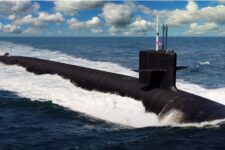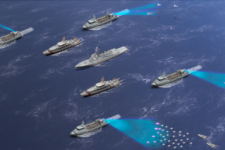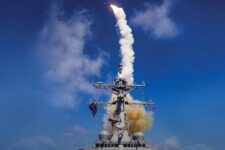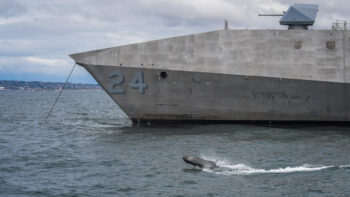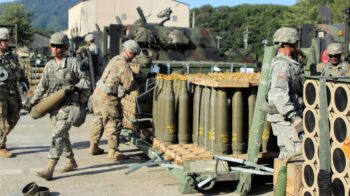 Washington: Iran has ambitious plans for its future naval fleet, which could pose serious trouble for the United States and its region allies if Tehran can pull it off.
Washington: Iran has ambitious plans for its future naval fleet, which could pose serious trouble for the United States and its region allies if Tehran can pull it off.
Last week, a senior Iranian naval officer announced his country was moving forward with plans to build a new aircraft carrier, along with a number of other advanced warships,
The Iranian navy has approved initial designs for the new carrier and will begin initial research and testing for the vessel soon, the official Iranian news agency IRNA reported.
The announcement comes almost two months after China’s surprising announcement that it had begun sea trials for its new aircraft carrier.
While it’s unknown whether Iran has the means or the know-how to see the carrier development through, it is latest move by the country to put some very dangerous teeth into its naval forces, according to a recently released report by the Washington-based defense think tank the Institute for the Study of War.
The Iranian navy already has carried out missions as far as the Red Sea and the eastern edge of the Mediterranean Sea with its fleet small, fast-attack vessels and Soviet-era subs.
But if Tehran can pull this massive naval expansion plan together, it will be able to push its forces to “the Caspian Sea, the Gulf of Oman, and the area from Bandar Abbas, near the Straits of Hormuz, near Pakistan,” according to the report.
That expansion, and its its impacts, will be felt first and foremost by the Navy’s Fifth Fleet — the biggest U.S. naval force in Central Command.
Aside from some flare ups near the Straits of Hormuz and elsewhere, Fifth Fleet commanders have kept the Iranian navy in check for the most part, due to its relatively small size.
But Iran’s maritime plans — which include new warships, ballistic anti-ship missiles and possibly a new aircraft carrier — could force the Navy to pour more money and manpower into operations to contain that bolstered force.
Fifth Fleet already has its hands full with counterpiracy and counterterrorism operations. Adding a expanded Iranian navy into that mix may prove to be a difficult juggling act for the Navy, especially in light of the extreme fiscal pressure the service and DoD is facing back in Washington.
This naval expansion could also affect American interests in Iraq. With combat operations now winding down, Iran has sought to expand its influence in the country that it fought a long, bloody war with in the 1980s.
Iran is already providing weapons and support to Islamic militants looking to destabilize the Iraqi government as a way to gain a foothold in the country.
A strong naval presence — a traditional sign of a country’s power and influence — could be another way Tehran shows Iraqi leaders that an alliance with Iran, and not the United States, is the way to go.
While this naval expansion may make Iran a much bigger headache for the Pentagon, American allies in the region, namely Saudi Arabia, could provide a much-needed counterbalance.
Riyadh has kicked off a multibillion effort, known as the Saudi Naval Expansion Program II (SNEP II), to bolster its maritime forces along the country’s eastern waters. The program, estimated to be worth between $10 and $20 billion, will likely feature the newest ships, helicopters and aircraft in the U.S. Navy’s fleet.
DoD and their counterparts in Saudi Arabia are discussing potential sales of the Navy’s Littoral Combat Ship, the MH-60R Knighthawk helicopter, the P-8 Poseidon intelligence, reconnaissance and surveillance aircraft and MQ-8 Fire Scout unmanned drone as part of SNEP II.
Aside from having the very best hardware the U.S. Navy has to offer, the SNEP II sales will ensure American and Saudi forces will be able to coordinate its forces, should a situation flare up with Iran or any other regional power.
Again, all this may be for naught, if this plan proves too ambitious for Tehran to see through.
But if the country’s efforts to build a nuclear weapon are any indication of how this plan plays out, its safe to say that Washington and others in the region will be keeping a close eye on Iran’s shipyards over the next few years.
Anduril, South Korean shipbuilder HD Hyundai announce new partnership for autonomous systems
US Navy Secretary Carlos Del Toro has praised South Korean shipbuilders such as HD Hyundai at recent events, encouraging more participation with US industry.








